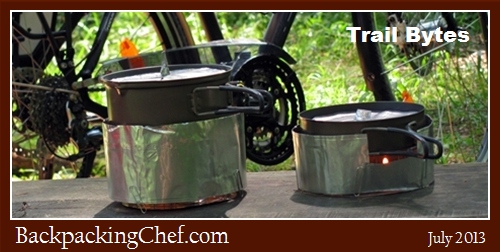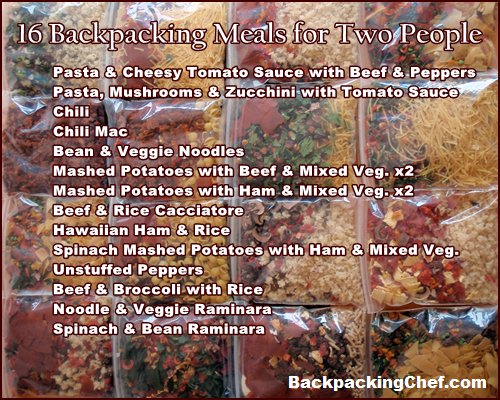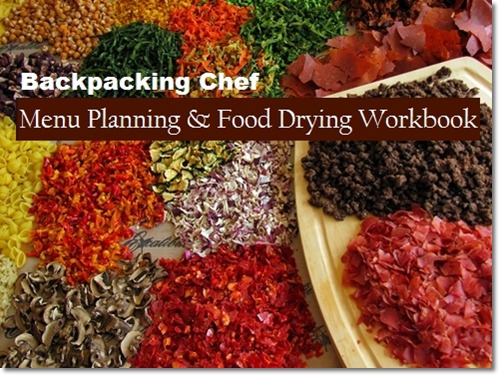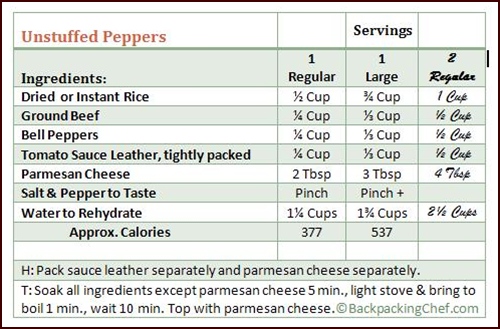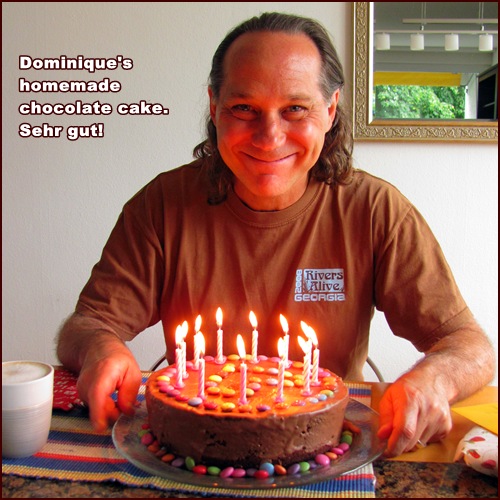| Back to Back Issues Page |
 |
|
July 2013 Trail Bytes: Cooking Backpacking Meals for Two July 31, 2013 |
| Hello, Dominique introduced me to a new German word this month: Naherholungsgebiet My darling Swiss wife snickers when my English-speaking tongue tries to untwist it. It means a natural or recreational area nearby where one can relax.
Our wanderings took us to the Töss River where we stopped to enjoy a hot lunch of Chili and Unstuffed Peppers. I heated up the meals in my Evernew 900 ml Titanium pot and fry pan lid, since I loaned my larger Evernew 1300 ml pot to our daughter for her trip to Norway. I rehydrated the meals with a little over one cup of water each and heated them over three tea light candles. Twenty-five minutes later the meals were piping-hot and delicious. I think of my mother on these occasions; she made wonderful stuffed peppers. Weight-Saving Tip: If cooking for two, you can cook a double portion in one pot (1300 ml capacity pot works well) and heat with a backpacking stove, but another way is to cook two single portions in a smaller pot with fry pan lid using tea light candles under both portions. If using candle power, precook and dehydrate pasta and rice first. Not only can you leave the stove and fuel canister at home, but the fry pan lid serves as the plate for the second person and you can feast on two different entrees instead of one. In the past, I only used candles to heat sides of vegetables or fruits for desserts. I used ½ cup of water for that purpose. Now we have learned that three tea light candles can heat a full-size meal rehydrated with 1 to 1¼ cups water. See my backpacking stoves page if you are interested in cooking with tea light candles. Care Package to Norway I was busy in the kitchen in July preparing 16 (double serving) dehydrated meals for Válerie and Tim’s trip to Norway. Restaurants and lodging are very expensive in Norway, so they decided to camp part of the time and save money with some of Chef Glenn’s cooking. Their plan was to buy a stove and fuel when they got to Norway.
How did I know how much food to purchase and dry? I started by creating a menu which took into account their preferences (don’t like shrimp or tuna, etc) and other factors such as not being able to find canned chicken in the stores in our village. It was easy to substitute ground beef or ham in recipes that I normally would have prepared with shrimp or chicken. I was limited to one mac and cheese meal because they don’t sell it here and I only had one box that I had brought back from America. I also substituted thin egg noodles for ramen noodles. Once I had the meals and planned substitutions selected, I tallied up the dried ingredients from each recipe and compared the total dried food needed with my known yields from previous drying sessions. The exercise gave me an opportunity to revisit and refine the food planning process that I go through for long trips and put it all into a workbook that will save you time and help you estimate how much food to purchase and dry for your backpacking meals. It’s a digitally delivered workbook (PDF) so you can print out the worksheets whenever you need them.
Quick-Reference Recipe Card
The workbook is available at a very special price for a limited time when you purchase it with Recipes for Adventure.
View the instruction pages, sample worksheets and recipe cards at
Menu Planning & Food Drying Workbook
From the Mailbag: Last week I returned from a two week canoe trip in Canada's Yukon Territories along the Wind River. There were eight of us paddling and in order to get in and out we had to make use of float planes that had weight requirements. Because we were on a budget and we wanted to save on weight I purchased your book. Preparing three meals a day times eight people times 12 days is a lot of work. My dryer was going 24/7. The results were nothing short of FANTASTIC. We ate far better than we would have at home. Thank you so much for such an excellent book. I know that some of the other paddlers will be purchasing your book shortly. The most difficult part of using the book was working out quantities. For instance, if I have four recipes that each need so many dried mushrooms times eight people, how many fresh mushrooms should I buy and dry? That's why your worksheets will come in handy. –Steve D. Thanks Steve! I could go on, but I have to get out this July newsletter in July! Next month I’ll share a little trick I employed to make some really delicious, super healthy potato bark while I was preparing Válerie’s meals. We celebrated another birthday this weekend. I am still young at heart.
All the best from Switzerland!
Backpacking Chef Books
If you received this newsletter from a friend and would like to subscribe (it's free), subscribe here. Visit my BackpackingChef Facebook page for the lastest posts. Be sure to "follow" the page to continue seeing posts. |
| Back to Back Issues Page |
